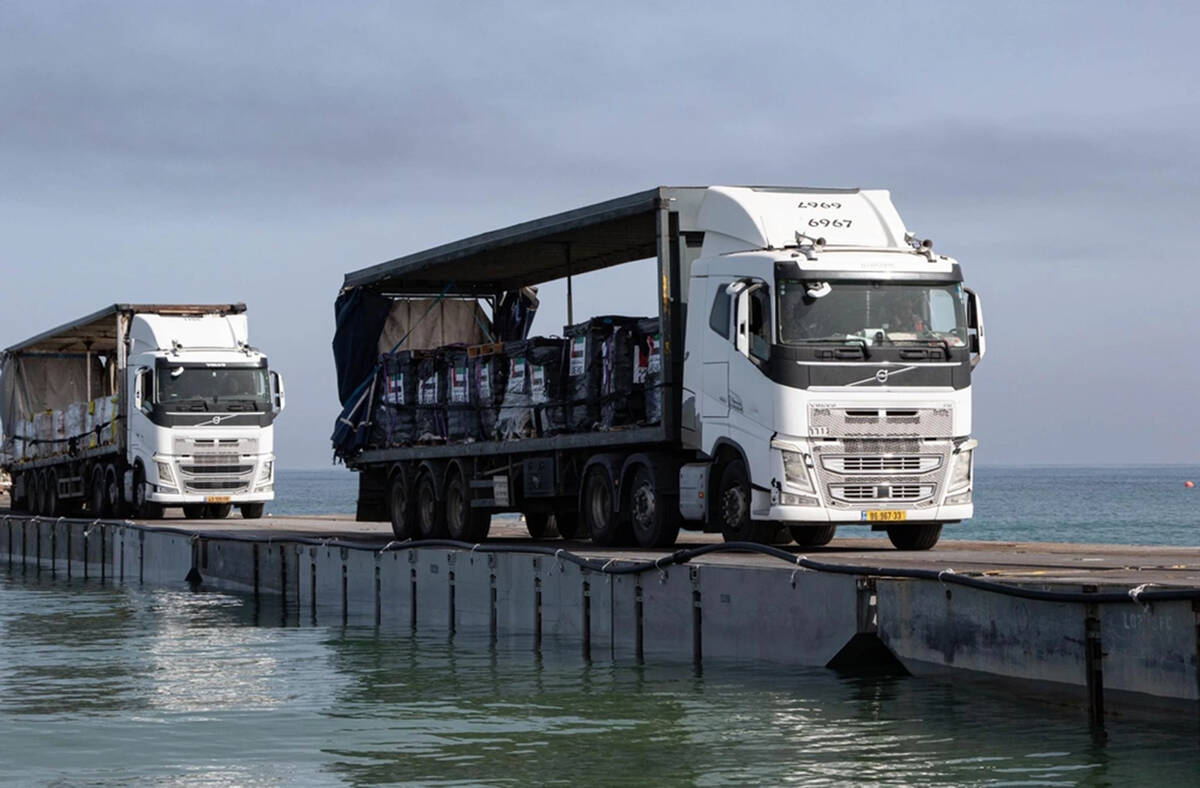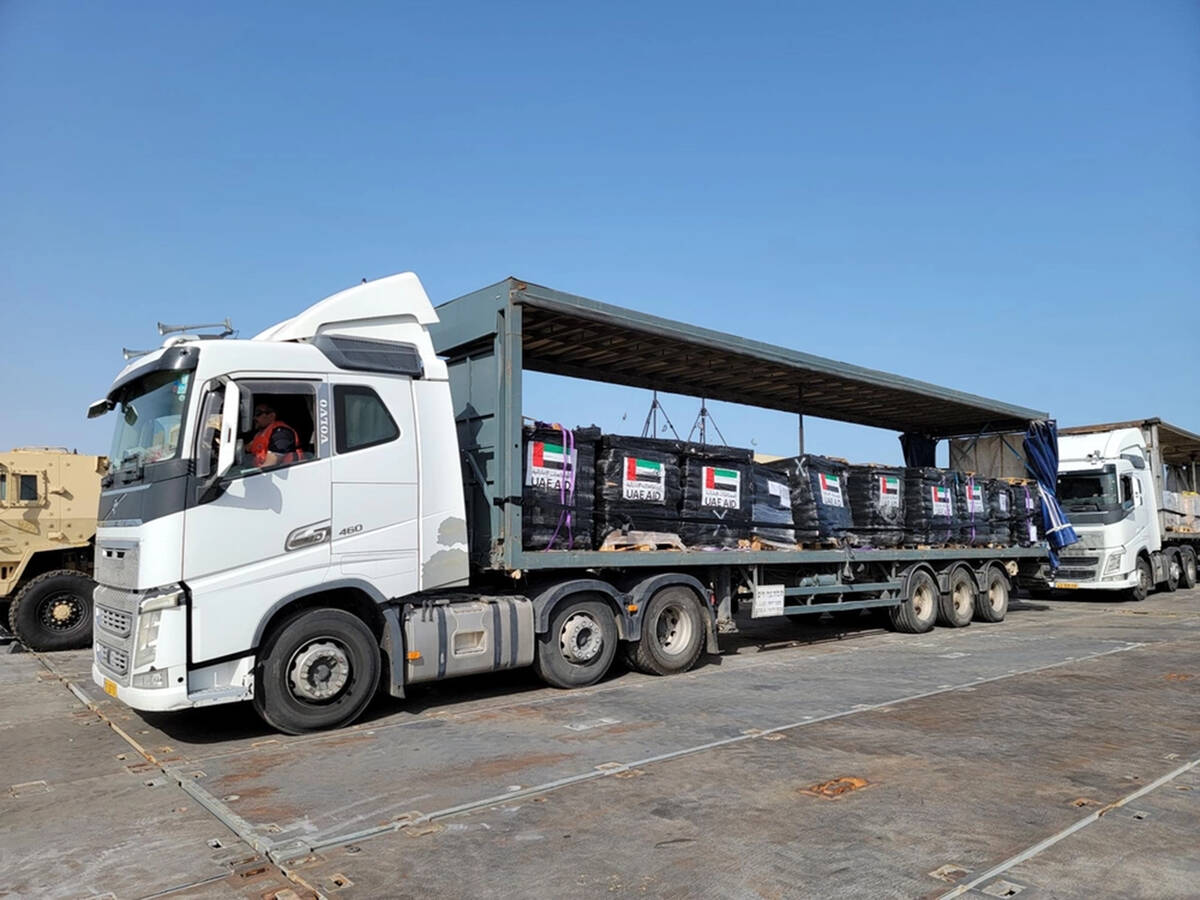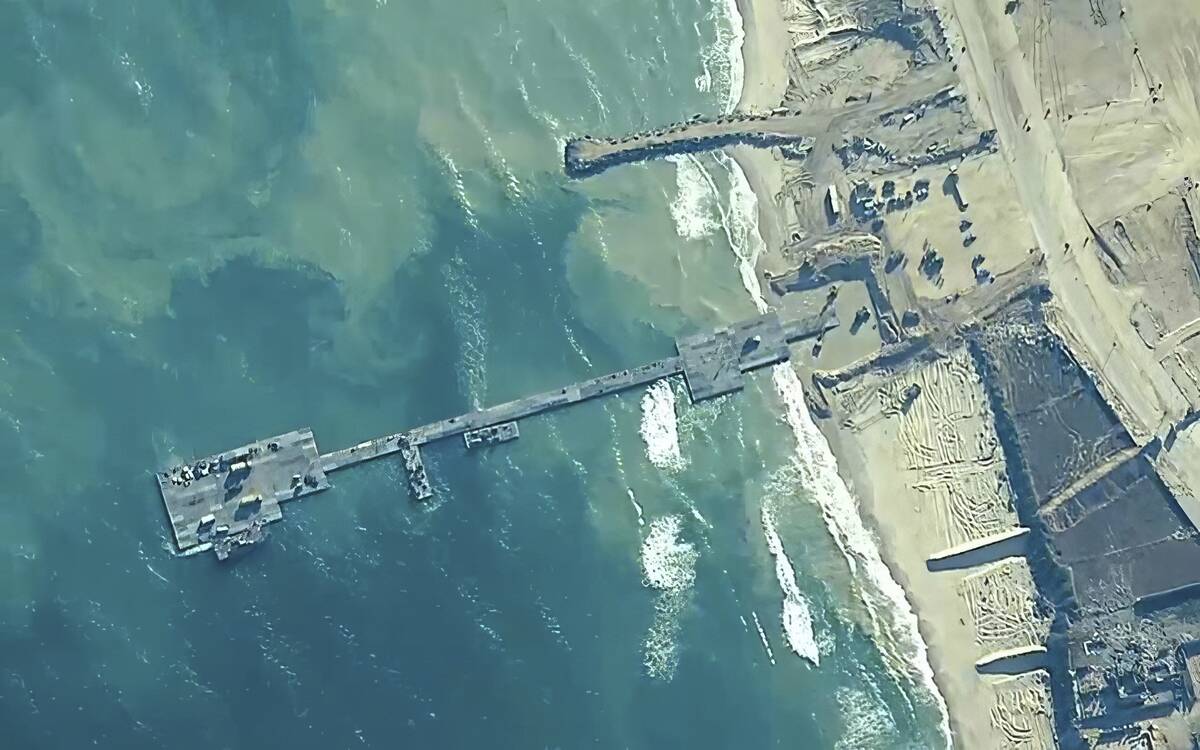Trucks carrying aid for Gaza Strip cross new US pier
WASHINGTON — Trucks carrying aid for the Gaza Strip rolled across a newly built U.S. pier and into the enclave for the first time Friday.
The shipment is the first in an operation that American military officials anticipate could scale up to 150 truckloads a day. But the U.S. and aid groups warn that the floating pier project is not a substitute for land deliveries.
The operation’s success also remains tenuous because of the risk of terrorist attack, logistical hurdles and a growing shortage of fuel for the aid trucks. Aid agencies say they are running out of food in southern Gaza and fuel is dwindling.
Troops finished installing the floating pier on Thursday, and the U.S. military’s Central Command said the first aid crossed into Gaza at 9 a.m. Friday. It said no American troops went ashore in the operation.
The Pentagon said no backups were expected in the distribution process. The U.S. plan is for the United Nations, through its World Food Program, to take charge of the aid once it leaves the pier.
This will involve coordinating the arrival of empty trucks and their registration, overseeing the transfer of goods coming through the floating dock to the trucks and their dispatch to warehouses across Gaza, and, finally, handing over the supplies to aid groups for delivery.
The U.K. said some of its aid for Gaza was in the first shipment that went ashore, including the first of 8,400 kits to provide temporary shelter made of plastic sheeting. And it said more aid, including 2,000 additional shelter kits, 900 tents, five forklift trucks and 9,200 hygiene kits, will follow in the coming weeks.
“This is the culmination of a Herculean joint international effort,” Prime Minister Rishi Sunak said.
Aid distribution had not yet begun as of Friday afternoon, said a U.N. official who spoke on the condition of anonymity because of the sensitivity of the matter. The official said the process of unloading and reloading cargo was still ongoing.
Jens Laerke, spokesman of the Office for the Coordination of Humanitarian Affairs, said the start of the operation was welcome but not a replacement for deliveries by land.
Pentagon spokesperson Sabrina Singh said the issue of fuel deliveries comes up in all U.S. conversations with the Israelis. She also said the plan is to begin slowly with the sea route and ramp up the truck deliveries over time as they work the kinks out of the system.
Israel fears Hamas will use fuel in the war, but it asserts it places no limits on the entry of humanitarian aid and blames the U.N. for delays in distributing goods entering Gaza. Under pressure from the U.S., Israel has opened a pair of crossings to deliver aid into the territory’s hard-hit north in recent weeks.
It has said that a series of Hamas attacks on the main crossing, Kerem Shalom, have disrupted the flow of goods. The U.N. says fighting, Israeli fire and chaotic security conditions have hindered delivery. There have also been violent protests by Israelis that disrupted aid shipments.
Israel recently seized the Rafah border crossing in its push against Hamas around that city on the Egyptian border, raising fears about civilians’ safety while also cutting off the main entry for aid into the Gaza Strip.
President Joe Biden ordered the pier project, expected to cost $320 million. The boatloads of aid will be deposited at a port facility built by the Israelis just southwest of Gaza City and then distributed by aid groups.
U.S. officials said the initial shipment totaled as much as 500 tons of aid. The U.S. has closely coordinated with Israel on how to protect the ships and personnel working on the beach.
But there are still questions about the safety of aid workers who distribute the food, said Sonali Korde, assistant to the administrator of USAID’s Bureau for Humanitarian Assistance, which is helping with logistics.
“There is a very insecure operating environment,” and aid groups are still struggling to get clearance for their planned movements in Gaza, Korde said.
Pentagon officials have made it clear that security conditions will be monitored closely and could prompt a shutdown of the maritime route, even if just temporarily. Navy Vice Adm. Brad Cooper, a deputy commander at the U.S. military’s Central Command, told reporters Thursday that “we are confident in the ability of this security arrangement to protect those involved.”
Already, the site has been targeted by mortar fire during its construction, and Hamas has threatened to target any foreign forces who “occupy” the Gaza Strip.
Biden has made it clear that there will be no U.S. forces on the ground in Gaza, so third-country contractors will drive the trucks onto the shore.
Israeli forces are in charge of security on shore, but there are also two U.S. Navy warships nearby that can protect U.S. troops and others.
The aid for the sea route is collected and inspected in Cyprus, then loaded onto ships and taken about 200 miles to the large floating pier off the Gaza coast. There, the pallets are transferred onto the trucks that then drive onto the Army boats, which will shuttle the trucks from the pier to a floating causeway anchored to the beach. Once the trucks drop off the aid, they return to the boats.
Gambrell reported from Dubai, United Arab Emirates. Associated Press writers Jamey Keaten in Geneva, Julia Frankel in Jerusalem, Jill Lawless in London and Edith M. Lederer at the United Nations contributed.





















